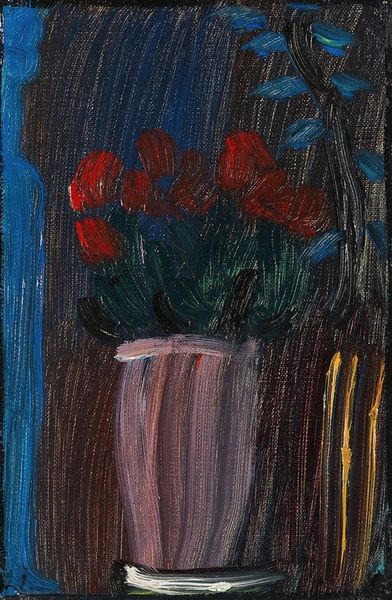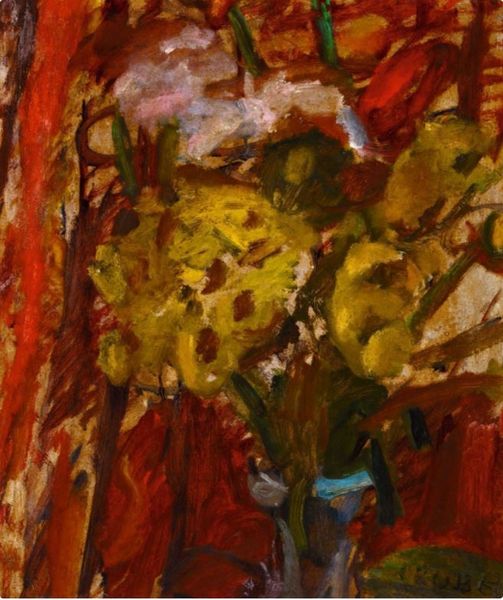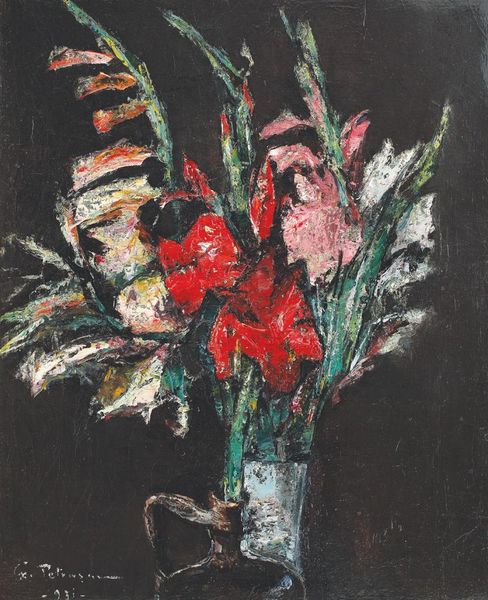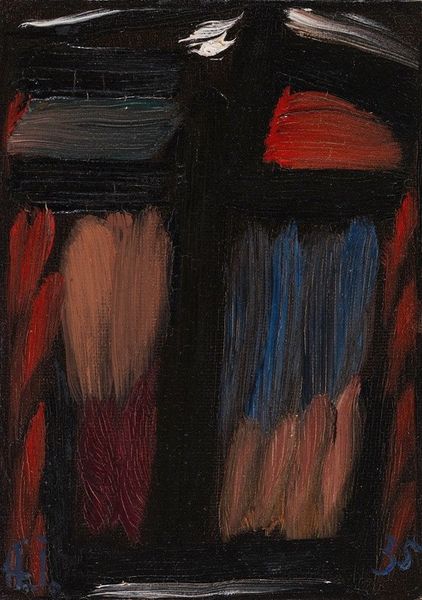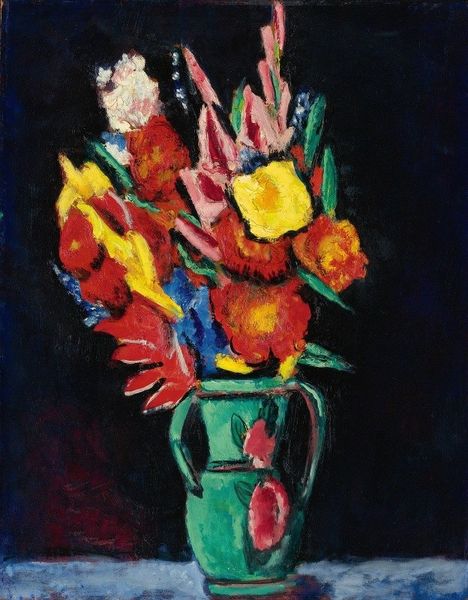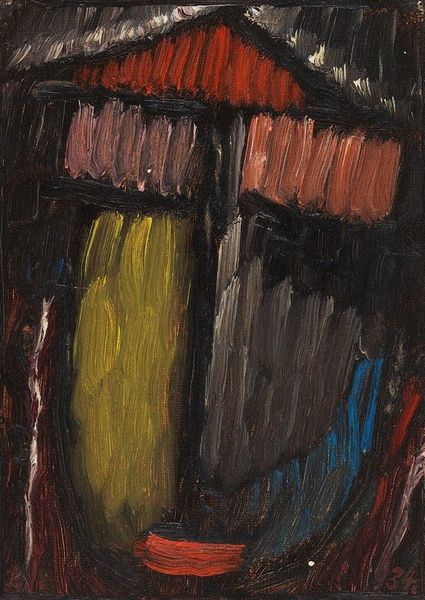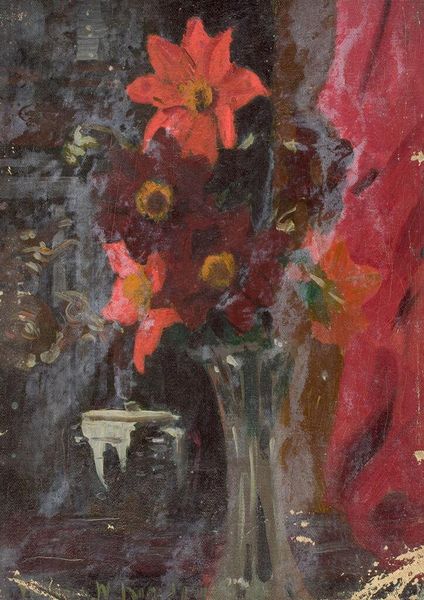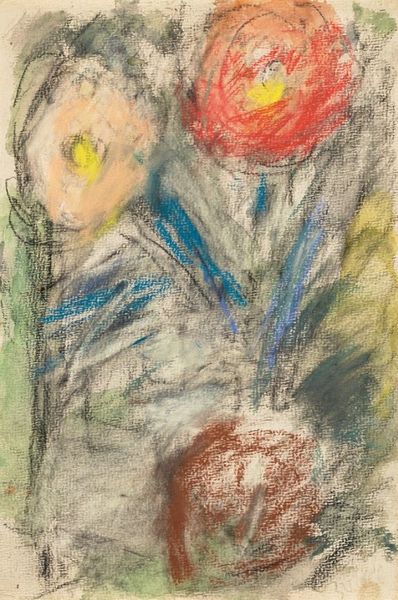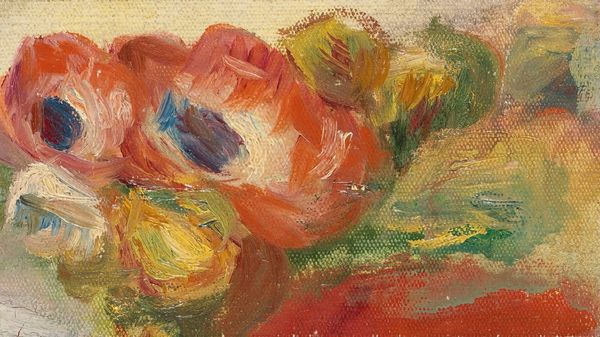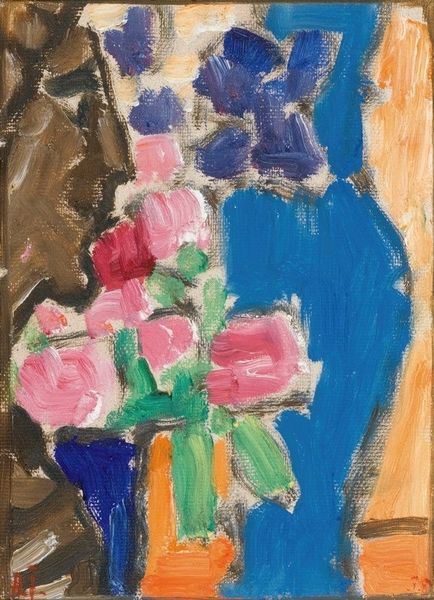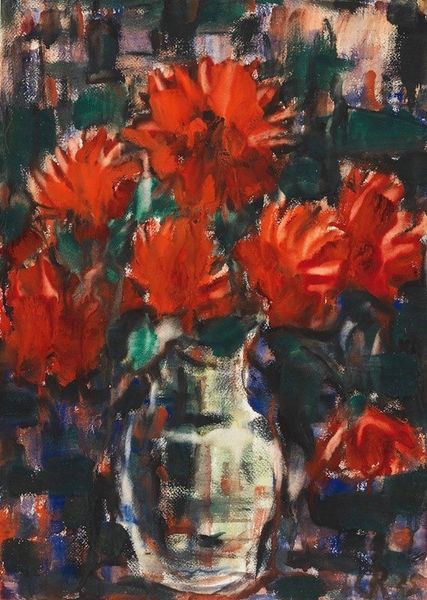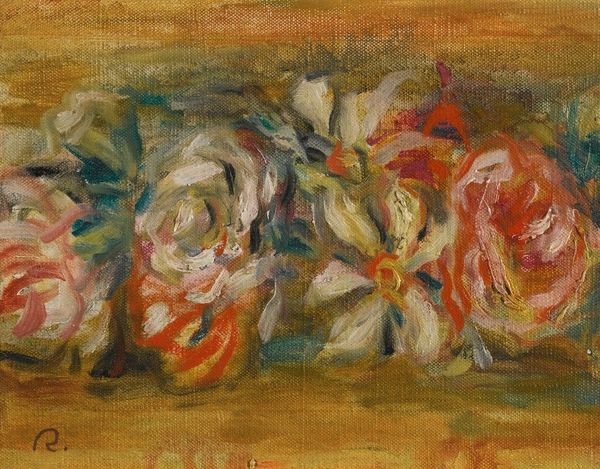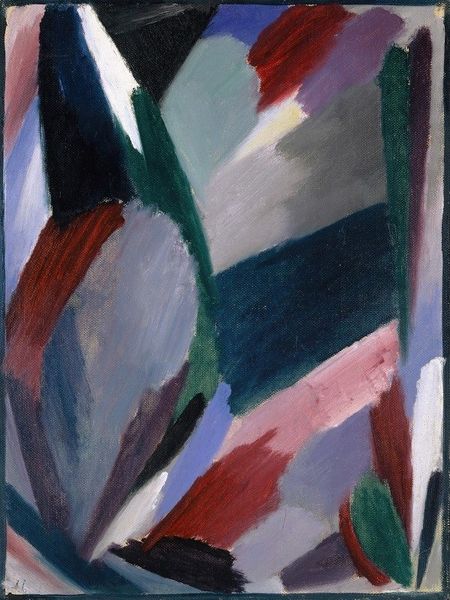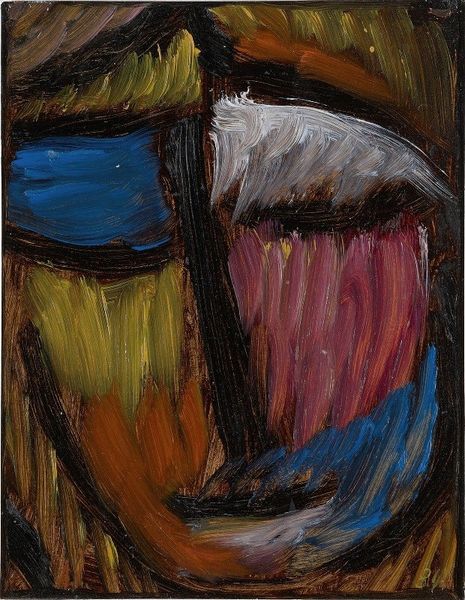
Copyright: Public Domain: Artvee
Editor: Here we have Alexej von Jawlensky's "Stillleben," painted in 1936 using oil paints. I'm struck by the texture; you can almost feel the thickness of the paint. What stands out to you in this piece? Curator: The first thing I see is the artist's clear emphasis on the *process* of applying the paint. Notice how the brushstrokes aren't blended; they are deliberately visible, creating a tactile surface. The material of the oil paint itself becomes a focal point, not just a means to depict the subject. Think of the cost of the paint too – what statement is Jawlensky making through such heavy applications? Editor: So, the *act* of painting is almost as important as the image itself? I hadn't thought of it that way. Curator: Exactly. And consider the historical context. In 1936, materials might have been limited. What does it say that Jawlensky chooses to be lavish in his application of valuable pigment to this abstracted floral arrangement? What's being consumed and what's being celebrated here? Editor: That makes me consider the labor involved too, especially the time invested in applying so much paint. It is a form of artmaking but perhaps more materially focused. Curator: Precisely! We're moving beyond just admiring a pretty picture to considering the material circumstances of its creation. How the paint itself contributes to the meaning. Editor: It’s fascinating how focusing on materials opens up new ways of understanding a painting. I guess I usually focus on the image! Curator: The material perspective helps to reveal choices that are made as part of that image. The process and the consumption create a conversation that adds to the painting's richness.
Comments
No comments
Be the first to comment and join the conversation on the ultimate creative platform.
